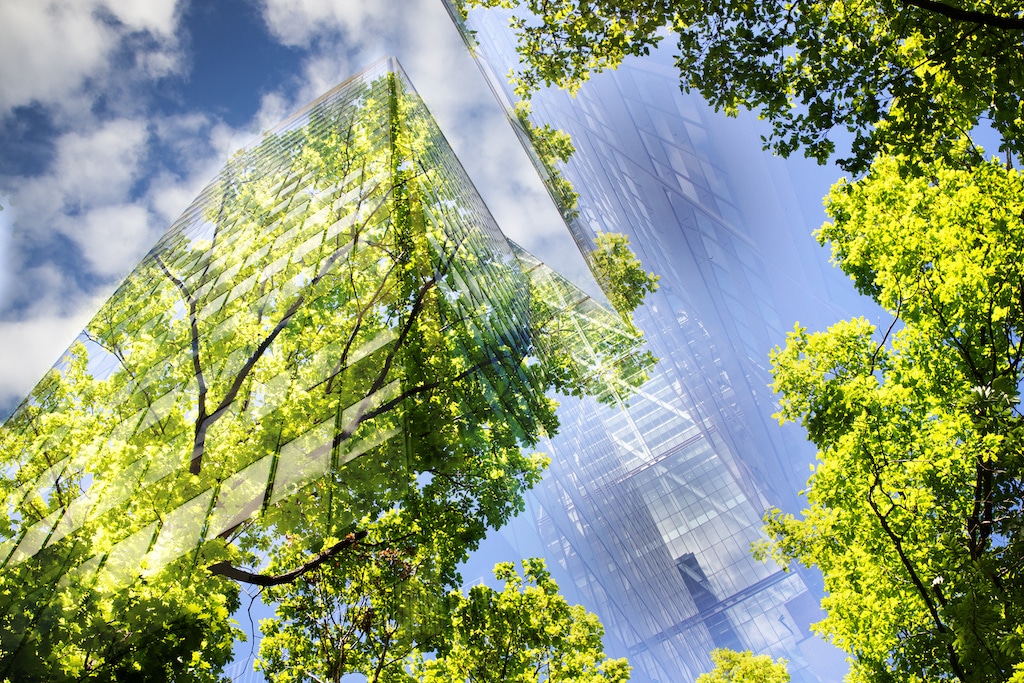
In order to avert the worst impacts of climate change, the Government of Canada has committed to achieving net-zero emissions by 2050, a goal that will require the support and engagement of all Canadians and businesses.
The transition to a cleaner and sustainable economy needs to be an immediate priority and sustained effort going forward. Cities like Toronto are already implementing plans to incentivize Canadian businesses’ transition to more energy efficient and net-zero practices, but we must continue innovating, strengthening, and building upon existing measures and technology to fight climate change and transform the economy to get to net-zero.
Building Code Updates For Getting To Net-Zero
A new report from Efficiency Canada outlines the presence of a discrepancy between Canada’s climate commitments and new building codes, and found that national building model codes can often reject the most energy-efficient option in some cases. It also found a lack of airtightness testing, an ineffective approach to energy code compliance measurement, and less stringent standards for large buildings, among other areas in need of an update. Based on these findings, the report argues that these and other contributing factors are cause for updates to be made to Canada’s building model codes to meet climate goals and efforts and get to net-zero.
Building codes are traditionally designed to create a minimum acceptable standard, including levels of energy efficiency, and can go towards reducing energy waste and carbon emissions. The buildings sector has the potential to play a key role in achieving Canada’s climate objectives, but to effectively do so requires a transition to a model codes system that is prepared for challenges beyond the next building code development cycle. This transition can connect codes to the larger policy systems and alleviate tensions in the development process and can help ensure that our national model codes actively encourage a market transformation towards highly efficient and low-carbon buildings for the future.
Canada’s Net-Zero Visions
More so than past financial crises, the COVID-19 pandemic has brought about a scale of disruption that has made Canadians question their basic assumptions on job security and the types of homes and communities in which they want to live. While COVID-19 remains an immediate threat, Canada must manage its impacts without losing ground on the growing threat that climate change presents to Canadians’ health and to the economy. As investors, consumers and governments increasingly base their decisions on environmental sustainability, taking climate action now is a critical economic opportunity that will maintain and create Canadian jobs, and make the economy more resilient and more competitive.
Canada is well-positioned to be among the leaders in this area, with Canadian expertise in low-carbon and sustainable solutions receiving annual international recognition. This gives Canada a place in growing global markets and a position to continue building strong international partnerships as the global economy transforms. The measures announced in Canada’s strengthened climate plan as well as the Canadian Net-Zero Emissions Accountability Act are just two parts of Canada’s plan to get to net-zero, and enshrines in legislation that it’s commitment to deliver on its goals of zero emissions by 2050.
Canadians are already thinking of the world they want to live in once the pandemic is over, and now more than ever, Canadians must work together to build a better future. Canadians want secure jobs and careers that will last not just tomorrow but beyond, and they want a future where their kids and grandkids avoid the worst outcomes associated with unchecked climate change. This cleaner, more competitive Canada is within reach: Canadians have the know-how, the skills, the technologies, and the will— but getting to net-zero will take an acceleration and update to Canadian codes and regulations and much more to be successful by 2050.
Read More: